 Nevertheless, She Persisted
Nevertheless, She Persisted
Hats off to Lynn Goldsmith! After devoting years of her time and energy — and a horrific amount of money — to fighting for her rights, against the predations of the Warhol Foundation and its co-conspirators in the high-finance art world, she has prevailed. A landmark decision by the U.S. Supreme Court has established that the Warhol Foundation’s publication of the late Andy Warhol’s unlicensed appropriation of her image of the musician Prince violated her copyright.
I’ve tracked this case all along, commenting on it briefly here several years back while waiting for the outcome. I find it ironic that the most radically conservative Supreme Court of my lifetime handed down a decision that makers of intellectual property across the land should celebrate.
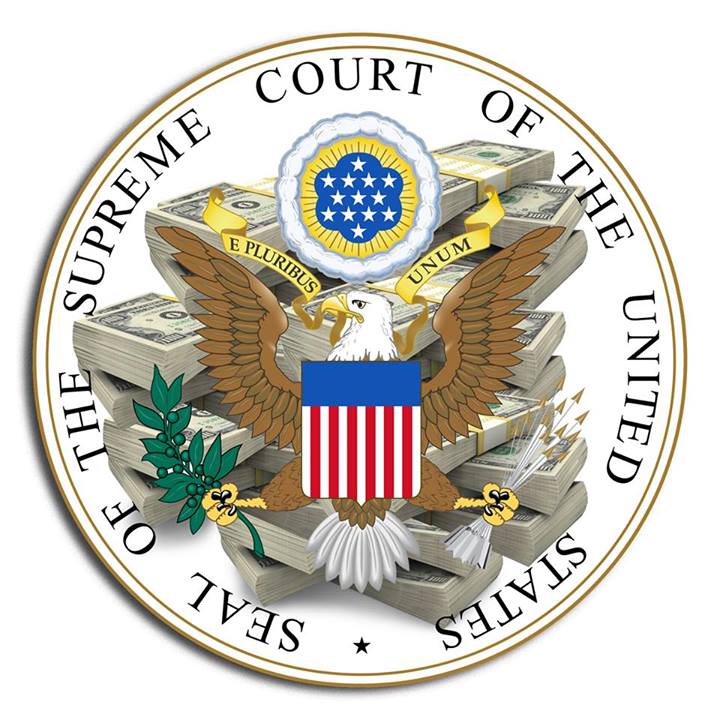 Ironic too that an otherwise astute member of the court’s liberal minority, Justice Elena Kagan, should offer a surprisingly arrogant and patronizing dissent that pretends to art-historical savvy while merely parroting postmodern “theory” and art-market rationales. Still, I’ll take the win, as should we all — especially photographers.
Ironic too that an otherwise astute member of the court’s liberal minority, Justice Elena Kagan, should offer a surprisingly arrogant and patronizing dissent that pretends to art-historical savvy while merely parroting postmodern “theory” and art-market rationales. Still, I’ll take the win, as should we all — especially photographers.
The Supremes’ decision tailors itself very narrowly. Thus its application to other cases will remain up for grabs. You can download a pdf file of the Supreme Court decision here, where you can also download the dissents and other related documents. Click here for a May 19, 2023 Associated Press report on the decision.
For a closely reasoned analysis of the original court decision in this case, the ruling against Goldsmith that the Supremes overturned, see “Warhol v. Goldsmith: A Terrible Decision, Correctly Decided” by Stephen Carlisle, published at the website of Nova Southern University in Florida on July 11, 2019. This article includes multiple illustrations of the Goldsmith original and the Warhol derivatives, so I’m not reproducing any of them with this post.
![]() And here’s “Ruling Against Warhol Shouldn’t Hurt Artists. But It Might,” by Blake Gopnik, from the New York Times on May 19, 2023. The Times art critic opens by whinging that the ruling really scared one artist’s mother, worried that her darling boy — whose hustle involves selling his own appropriations, which are outright and forthright copies of famous contemporary works of art priced at a modest $1K a pop — might get in trouble because of it. (YCMTSU) Gopnik feverishly opines that this ruling could spell the end of art as we know it, adding parenthetically that Justice Kagan cited him in her dissent. Figures.
And here’s “Ruling Against Warhol Shouldn’t Hurt Artists. But It Might,” by Blake Gopnik, from the New York Times on May 19, 2023. The Times art critic opens by whinging that the ruling really scared one artist’s mother, worried that her darling boy — whose hustle involves selling his own appropriations, which are outright and forthright copies of famous contemporary works of art priced at a modest $1K a pop — might get in trouble because of it. (YCMTSU) Gopnik feverishly opines that this ruling could spell the end of art as we know it, adding parenthetically that Justice Kagan cited him in her dissent. Figures.
•
Nevertheless, They Persisted
Perhaps coincidentally, just days before the Supreme Court announced its decision in Andy Warhol Foundation for the Visual Arts, Inc. v. Goldsmith, the U.S. District Court for the Southern District of New York denied summary judgment to artist Richard Prince and his associated galleries in two copyright infringement cases brought by the photographers Donald Graham and Eric McNatt, regarding works from Prince’s “New Portraits” series. Their complaint was originally filed on December 30, 2015, which gives you some idea of how these things drag on, and what it takes to persist in pursuing them. (You’ll find the synopsis of this decision by the plaintiffs’ law firm here. There’s a more detailed synopsis here. And you can download the full decision here.)
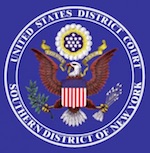 To be clear, this is not the final decision of the court in this matter. This decision means that the court has rejected Prince’s request for summary judgment in his favor on the matter, finding instead that the plaintiffs have sufficient grounds for their suit that it should proceed to trial. So the issues at stake in this case remain unresolved; next comes the trial, then the predictable round of appeals. However, it seems highly likely that, as precedent, the Supreme Court decision in Warhol Foundation v. Goldsmith will have some bearing if and when that eventuates. (It could get settled out of court.)
To be clear, this is not the final decision of the court in this matter. This decision means that the court has rejected Prince’s request for summary judgment in his favor on the matter, finding instead that the plaintiffs have sufficient grounds for their suit that it should proceed to trial. So the issues at stake in this case remain unresolved; next comes the trial, then the predictable round of appeals. However, it seems highly likely that, as precedent, the Supreme Court decision in Warhol Foundation v. Goldsmith will have some bearing if and when that eventuates. (It could get settled out of court.)
(Disambiguation note: Prince the defunct musician, whose portrait features in the Warhol Foundation v. Goldsmith case, is not the same person as Richard Prince the living pomo artist, whose appropriation of images by two photographers get addressed in what follows.
And, while I’m at it, Donald Graham, who made the photograph of a Rastafarian appropriated by Richard Prince that features in this current case, is not Patrick Cariou, who made images of Rastafarians that Richard Prince also appropriated, around which an earlier case revolved. Click here for a summation of that case.)
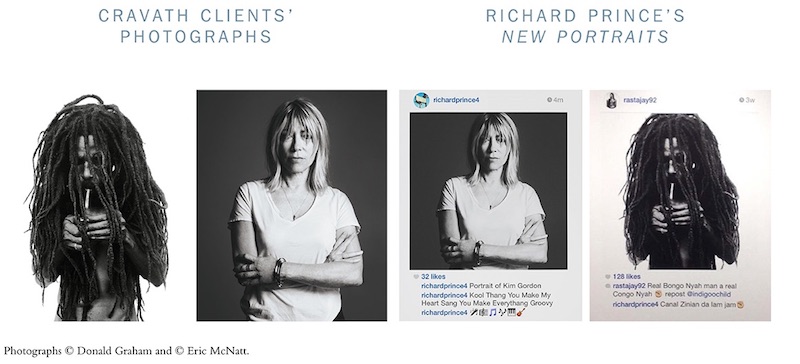
Comparison of Donald Graham and Eric McNatt photos to Richard Prince derivations, Cravath, Swaine & Moore LLP website, screenshot
•
… and Zombies
Among my deepest pleasures this past winter I count my reading of Pride and Prejudice and Zombies, by Jane Austen and Seth Grahame-Smith.
I picked this up at Dollar Tree, definitely an impulse buy. For my dollar I got a brand-new copy of the illustrated Deluxe Heirloom Edition, with a faux-leather binding and “30% More Zombies!” Should you decide to share my indulgence, I definitely recommend this edition above its predecessors — more bang for your buck.
Needless to say, it’s not for everyone. I’m not a Jane Austen fan, so this didn’t ruin a great novel for me — as it might for anyone in love with her work, because it makes an indelible impression that would surely affect any subsequent reading of the original. However, as a former English Lit major I do have enough acquaintance with this phase of the British novel to appreciate Grahame-Smith’s send-up of the comedy of manners as a mode.
Nor do I count myself a zombie addict, though I consider the original Night of the Living Dead as one of the great horror films of all time. Nonetheless, I found this delirious and delicious mashup irresistible. Indeed, I laughed so hard — ROFL-level roaring and giggling — that I had to restrict my bedtime reading thereof to three chapters a night, lest I hurt myself and/or become incapable of calming myself down and going to sleep. And also lest I use it up too quickly. So, should this sound like your dish of tea, I recommend it highly.
My delight in this reworking of a beloved masterpiece led me to consider other candidates for similar treatment: “Hiawatha and Zombies,” “Moby Dick and Zombies,” “Tom Sawyer and Zombies.” Moving into the early 20th century, “The Great Gatsby and Zombies,” “The Sun Also Rises and Zombies,” “Their Eyes Were Watching God and Zombies,” “The Making of Americans and Zombies,” “Of Mice and Men and Zombies.” In children’s literature, “The Bobbsey Twins and Zombies,” “The Hardy Boys and Zombies,” “The Wizard of Oz and Zombies,” “Little House on the Prairie and Zombies.” Then to mid-century: “The Catcher in the Rye and Zombies,” “Invisible Man and Zombies,” “Giovanni’s Room and Zombies,” “On the Road and Zombies,” “Howl and Zombies” (“I saw the best brains of my generation / eaten by ravening zombies …”) And straight on to “Infinite Jest and Zombies,” “Gravity’s Rainbow and Zombies,” “The Color Purple and Zombies” … you get the idea.
As Grahame-Smith indicates in a prefatory note, digital technology enabled him to work on this easily by downloading a digital copy of the original and making his alterations and revisions directly in that file. But what makes the project possible in the first place? The copyright law, roughly standardized around the world, which protects an author’s rights for a fixed period of time, after which the work enters “the public domain,” at which point anyone who wishes to do so can do with it as they will. That includes adding zombies, changing everyone’s pronouns and gender, inserting flashbacks, and otherwise rewriting to one’s heart’s content.
But until then the work remains legally inviolable, at least without the consent of the authors and/or their estates. So Austen’s works have long been out of copyright; works from the 1920s have begun to slip into the public domain; but works from mid-century on mostly remain sheltered. Consequently, Ralph Ellison, Allen Ginsberg, James Baldwin, Jack Kerouac, Thomas Pynchon, Alice Walker, David Foster Wallace et al remain off-limits for some time to come.
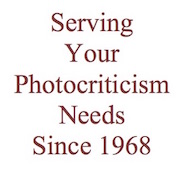 And I think that’s a good thing. Because any original work in any medium deserves a chance to embed itself within the culture in the form its maker(s) intended and approved before we get to play fast and loose with it for our own amusement. I think that, as citizens, we owe that basic courtesy and respect to all makers of intellectual property. We have a vast array of works available in the public domain as raw material to zombify or otherwise alter; “West Side Story and Zombies” can wait.
And I think that’s a good thing. Because any original work in any medium deserves a chance to embed itself within the culture in the form its maker(s) intended and approved before we get to play fast and loose with it for our own amusement. I think that, as citizens, we owe that basic courtesy and respect to all makers of intellectual property. We have a vast array of works available in the public domain as raw material to zombify or otherwise alter; “West Side Story and Zombies” can wait.
I’m all in favor of the public domain, just as I’m all in favor of the safeguards afforded me and my work by the copyright law. The latter guarantee that, for my lifetime and for several generations of readers once I shuffle off, no one can legally modify my work. I find it reassuring to know that, whenever I leave and for 70 years thereafter, my work is protected from such intrusion. So I’ll have decades to rest in peace before the potential publication of “Light Readings and Zombies” and “Critical Focus and Zombies” have me turning over (or even rising from) my grave. Or laughing hysterically in it.
(Footnote: A. A. Milne’s Winnie the Pooh went public domain in 2022. Now this: “Winnie the Pooh: Blood and Honey Trailer.”)
•
This post sponsored by a donation from Carlyle T.
•

Special offer: If you want me to either continue pursuing a particular subject or give you a break and (for one post) write on a topic — my choice — other than the current main story, make a donation of $50 via the PayPal widget below, indicating your preference in a note accompanying your donation. I’ll credit you as that new post’s sponsor, and link to a website of your choosing.
And, as a bonus, I’ll send you a signed copy of my new book, poetic license / poetic justice — published under my full name, Allan Douglass Coleman, which I use for my creative writing.


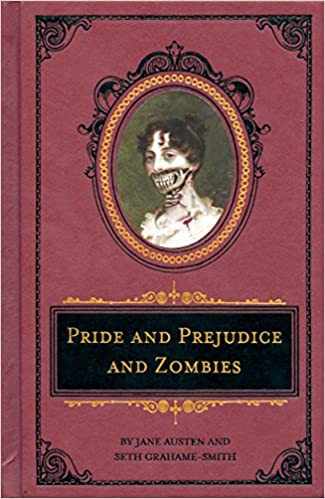




As a photographer who in the early 1960’s photographed both Warhol and Dr. Martin Luther King as well shooting at the Woodstock Music Festival’69 I was delighted and surprised by the Supreme Court decision.
Perhaps the physical ages of the Jurists proved that they are from an era where stealing someone’s art to use, albeit in a different style, is called copyright violation.
To be sure if I used my portraits of Warhol I made in 1963 in any commercial venue without getting prior approval from his heirs, they would be legally on my case before my breakfast the next morning after it’s publication.
Ditto the same from the King Family & Woodstock Music Festival Inc.
I seem to remember famous faces (and places?) protected under what years go we used to call “The Elvis Presley” laws.
Even our Empire State building is under copyright protection by its owners.